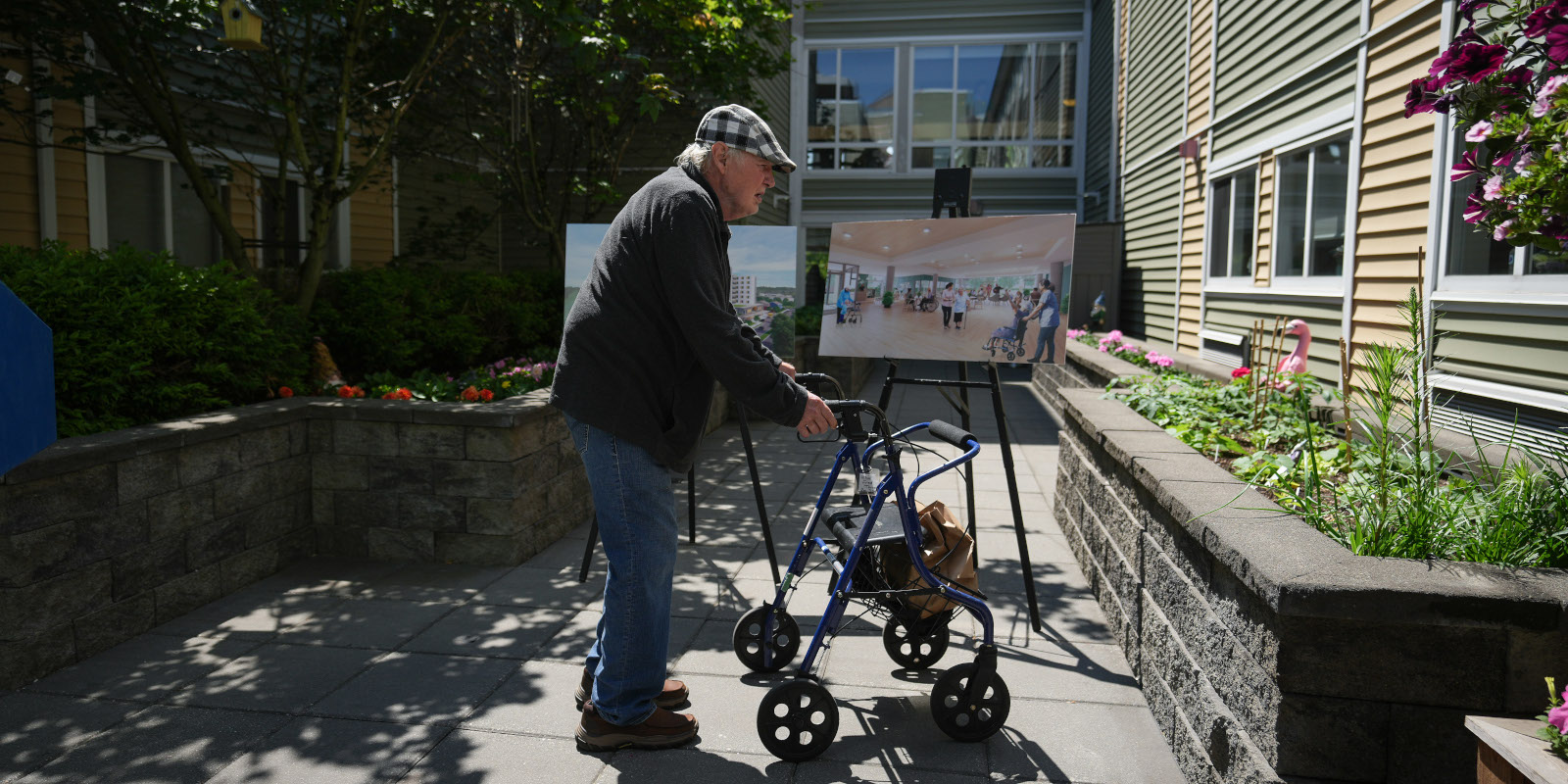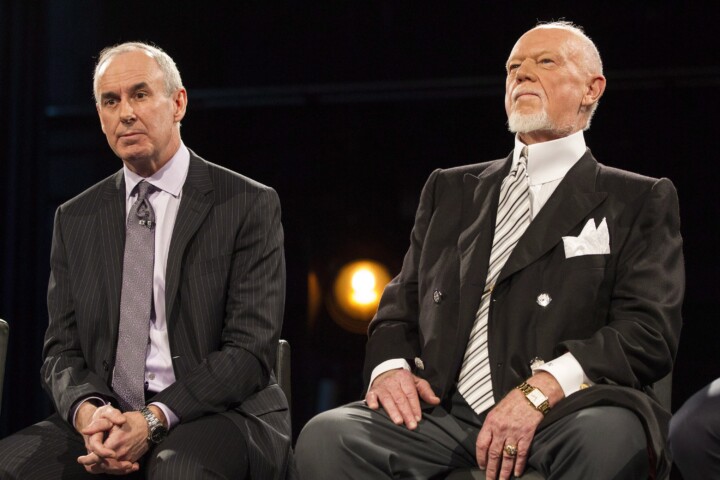
Over the past few weeks, the Hub has been expanding upon the top five submissions for the 2023 Hunter Prize for Public Policy, which asked for proposals that would tackle the problem of Canada’s lengthening wait times for medically necessary care. In each of these dispatches, readers got a closer look at the issues at play, as well as analysis from experts in the field. This is the final report in the series.
Canada’s health-care system, once a symbol of national pride and quality care for all, is showing signs of strain. Escalating wait times, a shortage of health-care professionals, and a heavy reliance on hospitals for end-of-life care have created a looming crisis. Given the high costs associated with end-of-life hospital care and the fact that more than half of Canadians would prefer not to die in a hospital, changes are clearly needed.
In their 2023 Hunter Prize submission “CARES: Canada’s Action for Resilient End-of-Life Services,” Krish Bilimoria and Matthew Yau, both physicians, and Samuel Wu, founder and CEO of healthtech startup Sabba Health, emphasize the need for a shift towards hospice care as a more cost-effective and compassionate alternative to hospital care.
While hospices offer valuable care, the authors note that their limited availability is creating a significant bottleneck. They suggest using Canada Health Transfers to fund the construction of more hospice beds, with a priority on underserved areas. To address staffing shortages in the health-care sector, they also propose leveraging Canada’s immigration policies to make it easier to hire foreign-trained health-care workers.
A growing need
Canada’s population is aging, with some studies suggesting that the average age of a Canadian resident could reach 44 by 2030, up from roughly 40 in 2010. The average age of the Canadian baby boomer is expected to reach 65 by 2030. And yet, a recent report from the Canadian Cancer Society found that there were less than four palliative care beds per 100,000 people.
In their proposal, the authors note that waitlists in hospitals are straining the health-care system and that patients who should be in palliative care are adding to the problem.
Shawn Whatley, a physician and Munk senior fellow in health policy at the Macdonald-Laurier Institute, says expanding hospice care is paramount, given that demand is currently far surpassing availability. “Expand the services, expand the hospice beds,” he says. “I think that’s a no-brainer.”
According to Whatley, the demand for palliative care beds goes beyond an aging population. The growing use of Canada’s medical assistance in death (MAiD) program is also having an impact.
“The hospices are being used for patients for MAiD,” says Whatley, adding that 45,000 people chose MAiD between 2016 and 2022. “They’re actually taking away from palliative care services.”
In 2022 alone, 13,241 people received MAiD—a 31.2 percent increase over 2021. MAiD practitioners found that almost 80 percent of MAiD patients had received palliative care in 2022.
Whatley notes that admitting patients who are nearing the end of their life to the hospital is far less cost-effective than having them go into hospice care—and he adds that hospice is a much better environment.
“Anything we can do to empty acute-care hospitals is a good thing, and it’d be good for patients too,” he says.
The personnel problem
As desperate as Canada is for an expanded hospice element within its health-care system, more beds require more staff.
Since at least 2000, some Canadians have opted for medical school in Ireland due to a shortage of spaces in Canadian medical schools. The smaller number of spaces in Canada has been traced back to Finance Minister Paul Martin’s budget cuts in 1996, which heavily impacted health-care funding.
Nadeem Esmail, a senior fellow at the Fraser Institute who served as its director of Health System Performance Studies from 2006 to 2009, believes that steps should be taken to expand medical training in Canada. This would create a home-grown supply of physicians, rather than a situation in which they needed to be brought in from abroad.
“I think part of the solution has to be allowing Canadians to be physicians, to be nurses, to be medical professionals, and not be so restrictive on training in this country,” he says.
While increasing the home-grown supply of medical personnel would address part of the problem, that supply would likely still need to be supplemented. The “CARES” proposal recommends an additional 3,000 hospice beds across Canada. In order to fully staff this expanded hospice space, the report authors estimate the need for 1,560 new immigrants who are trained for hospice work.
According to Whatley, this is not a novel approach. “Canada has always staffed health care by poaching from other countries,” he says. “That’s what we’ve always done for 50 years. We steal doctors from elsewhere, so we get those countries to train them, and then we credential them here, whether it’s a little extra training or not.”
The Canadian Institute for Health Information (CIHI) estimates that in 2021, over a quarter of all physicians working in Canada were trained abroad. Furthermore, the CBC reported in 2023 that just 9 percent of nurses working in Canada were trained abroad, compared to 26 percent of physicians.
The proposal recommends directing federal health transfers to support hospice care—including through the payment of nursing salaries and operational expenses, and new facility development. To accommodate an additional 3,000 operational hospice beds nationwide, an estimated $270 million in annual clinical costs and a one-time capital investment of approximately $900 million would be necessary, at an estimated cost of $3 million per 10 bed hospice.
The proposal notes that a 2023 CIHI report found that almost half of hospices in Canada were always or usually operating at full capacity. The same report found that half of the operating costs for hospices are raised annually through charity, with government funding picking up the rest. Hospice costs are also further reduced by volunteer work and the contributions of the patients’ families.
“It is always cheaper to not provide care, as care always costs money, and it’s just a question of how much care we’re going to provide and how much money we’re going to spend on care,” says Whatley.
He points out that whether or not the government will actually increase the number of health-care professionals is dependent on political considerations.
“Could we make all this go away just by giving licences to all the doctors and licences to all the nurses who are trained elsewhere? Yes and no,” he says. “The government will tend to increase the health human resource pool when it is in their best interests from a political perspective to get that done.”

More hospices could lead to savings
Regarding the resources that Canada has available, Esmail says the authors are correct to point out the cost savings made by shifting patients out of hospitals and into hospice care.
“There are lower-cost approaches, these are all very personal and individual questions, but from a system-wide perspective, I think it’s important to understand that we need to be dealing with patients as efficiently as we can,” says Esmail.
The proposal notes that Canada stands out among its peers as having some of the highest end-of-life hospital costs per person for cancer patients, due to lengthy stays and deaths in hospital. The current figure is USD $21,840 for the last six months of a person’s life. The same treatment costs USD $10,936 in the Netherlands and USD $18,500 in the United States.
“This cost and care discrepancy in Canada is linked to the heavy reliance on hospitals for end-of-life care delivery, impacting both expense and quality,” noted the authors, who pointed out that an acute-care hospital bed costs $1,000 a day, while a hospice bed is $400 a day. “There are significant cost savings when shifting care from an acute hospital bed to a residential hospice.”
Krystle Wittevrongel, a senior policy analyst with the Montreal Economic Institute, was surprised at just how much money can be saved by transferring patients from the hospital into hospice. However, she wondered about the costs incurred by bringing over a larger number of foreign workers to staff the hospices.
“I wonder about the potential for hospice care at home,” she added. “I wonder if a virtual palliative care option is possible.”
Emmanuelle Faubert, an economist at the Montreal Economic Institute, points to another consideration regarding the cost savings. She notes that there are also significant wait times for long-term care homes in Canada, which, like hospice, require additional staffing and provide some level of palliative care.
“If there’s a lack of long-term care homes, and there’s a struggle for the funds for long-term care, and we’re going to build hospices, then I feel like there’s not that much cost saving,” she says.
Deeper questions
Nadeem Esmail notes that Canada’s health-care global budgeting funding model—in which a fixed total budget is allocated for health-care expenses over an annual period—is aimed at controlling costs rather than dynamically responding to a population’s health-care needs. As a result, he says hospitals may have an interest in retaining patients who would be better served in a hospice facility due to the lesser strain on their budgets.
“The patient who’s at the end of their life is actually a fairly inexpensive patient in the hospital because they don’t take a lot of medical resources,” he says. “That patient is blocking a bed for someone who will take a lot of medical resources, and in a global budget model, that’s a cost saving, and we need to fix that problem.”
He also suggests that the predominant view of hospice as a place for people at the end of their life can limit the resources available.
“I think one of the tougher questions is, as you move away from the hospital and into hospice, there’s a sort of acceptance that this is the final stretch and there’s only so much medical care that will be provided, which can drive a lot of the cost,” says Esmail. “But I think those are those are bigger, deeper societal questions and issues that need to be answered more broadly.”
Recommended for You

Falice Chin: A tale of two (Poilievre) ridings

‘We’re winning the battle of ideas’: Conservative MP Aaron Gunn on young men moving right, the fall of ‘wokeness,’ and the unraveling of Canadian identity

The Notebook by Theo Argitis: Mark Carney’s first major tests

The Weekly Wrap: Trudeau left Canada in terrible fiscal shape—and now Carney’s on clean-up duty




